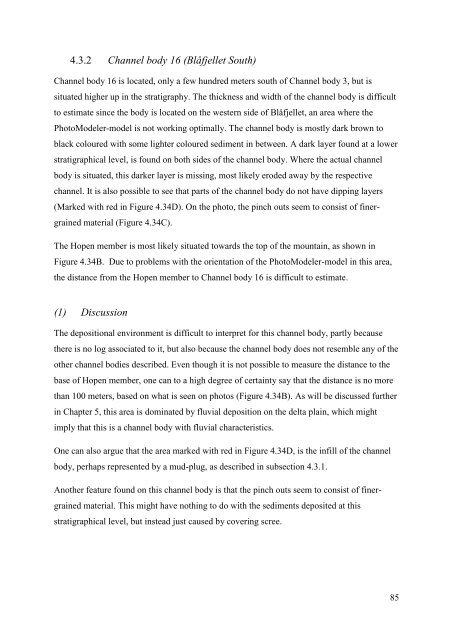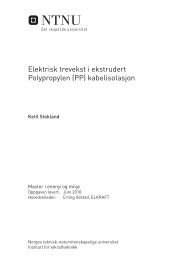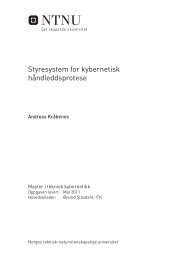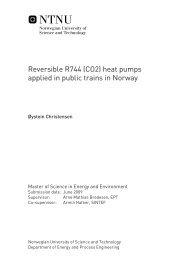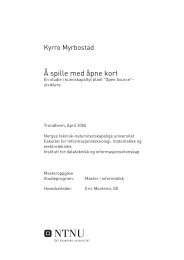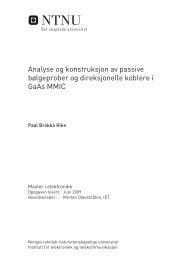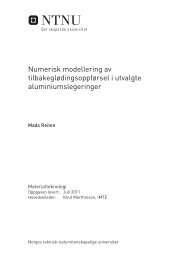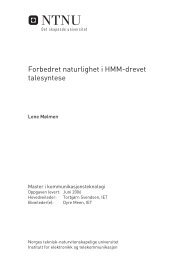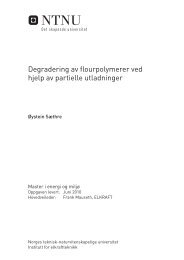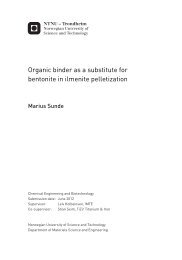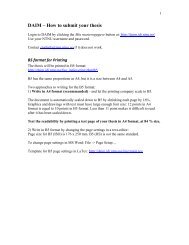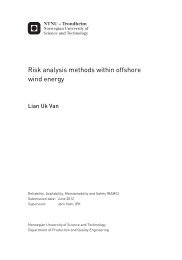Visualize and interpret the geometry, heterogeneity and lateral ...
Visualize and interpret the geometry, heterogeneity and lateral ...
Visualize and interpret the geometry, heterogeneity and lateral ...
You also want an ePaper? Increase the reach of your titles
YUMPU automatically turns print PDFs into web optimized ePapers that Google loves.
4.3.2 Channel body 16 (Blåfjellet South)Channel body 16 is located, only a few hundred meters south of Channel body 3, but issituated higher up in <strong>the</strong> stratigraphy. The thickness <strong>and</strong> width of <strong>the</strong> channel body is difficultto estimate since <strong>the</strong> body is located on <strong>the</strong> western side of Blåfjellet, an area where <strong>the</strong>PhotoModeler-model is not working optimally. The channel body is mostly dark brown toblack coloured with some lighter coloured sediment in between. A dark layer found at a lowerstratigraphical level, is found on both sides of <strong>the</strong> channel body. Where <strong>the</strong> actual channelbody is situated, this darker layer is missing, most likely eroded away by <strong>the</strong> respectivechannel. It is also possible to see that parts of <strong>the</strong> channel body do not have dipping layers(Marked with red in Figure 4.34D). On <strong>the</strong> photo, <strong>the</strong> pinch outs seem to consist of finergrainedmaterial (Figure 4.34C).The Hopen member is most likely situated towards <strong>the</strong> top of <strong>the</strong> mountain, as shown inFigure 4.34B. Due to problems with <strong>the</strong> orientation of <strong>the</strong> PhotoModeler-model in this area,<strong>the</strong> distance from <strong>the</strong> Hopen member to Channel body 16 is difficult to estimate.(1) DiscussionThe depositional environment is difficult to <strong>interpret</strong> for this channel body, partly because<strong>the</strong>re is no log associated to it, but also because <strong>the</strong> channel body does not resemble any of <strong>the</strong>o<strong>the</strong>r channel bodies described. Even though it is not possible to measure <strong>the</strong> distance to <strong>the</strong>base of Hopen member, one can to a high degree of certainty say that <strong>the</strong> distance is no morethan 100 meters, based on what is seen on photos (Figure 4.34B). As will be discussed fur<strong>the</strong>rin Chapter 5, this area is dominated by fluvial deposition on <strong>the</strong> delta plain, which mightimply that this is a channel body with fluvial characteristics.One can also argue that <strong>the</strong> area marked with red in Figure 4.34D, is <strong>the</strong> infill of <strong>the</strong> channelbody, perhaps represented by a mud-plug, as described in subsection 4.3.1.Ano<strong>the</strong>r feature found on this channel body is that <strong>the</strong> pinch outs seem to consist of finergrainedmaterial. This might have nothing to do with <strong>the</strong> sediments deposited at thisstratigraphical level, but instead just caused by covering scree.85


